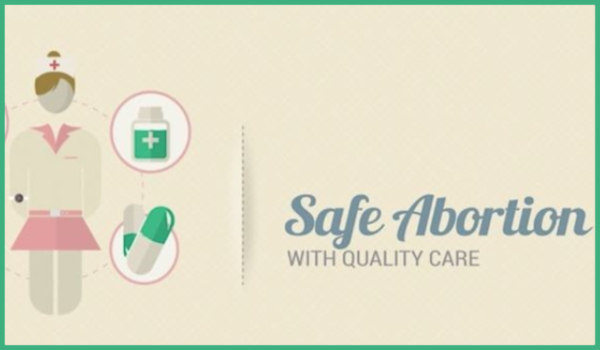
by Blair G Darney, Bill Powell, Kathryn Andersen, Sarah E Baum, Kelly Blanchard, Caitlin Gerdts, Dominic Montagu, Nirali M Chakraborty, Nathalie Kapp
BMJ Sexual and Reproductive Health 2018 DOI: http://dx.doi.org/10.1136/bmjsrh-2018-200060
Governments, advocates, providers, policymakers and other stakeholders who want to fully support women’s rights to access abortion across the globe must address quality of care, in addition to efforts to change abortion laws, train providers and expand service provision. Documenting and working to improve the quality of abortion care is necessary in order to improve service delivery and health outcomes, expand access to safe abortion especially in legally restricted settings, and to ensure the human right to the highest attainable standard of health, as outlined by the WHO. Quality of healthcare services is the degree to which services produce desired health outcomes and rely on best available evidence. Domains of quality as defined by the WHO and the Institute of Medicine (IOM) ask whether healthcare is effective, efficient, accessible, acceptable/patient-centred, equitable and safe.
The safety of abortion is well established in settings where abortion is legal, despite claims to the contrary from those who seek to restrict access to abortion. A safe abortion is understood to mean a medical (medication), aspiration, or surgical abortion that conforms to WHO guidelines. Well-managed self-use of medical abortion is on the spectrum of safe abortion. In settings with high-quality clinical data and access to legal abortion such as the United States, first-trimester abortions carry an extremely low risk of death (0.3–0.5/100,000 abortions) which has remained stable over time. Risk increases in the second trimester (2.5–6.7 deaths per 100 000 procedures for 14–17 and >18 weeks, respectively). Major complications are also rare; ≤0.1% of first-trimester abortions and up to 0.23% of abortions when all gestational ages are included. Abortion in any trimester is 14-fold safer than childbirth in a high-income setting, and safer than many other common healthcare procedures. However, quality abortion care includes, but is not limited to, safety.
In the quality of care literature, quality is further categorised as interpersonal quality, or the healthcare interaction, and technical quality, whether providers meet normative standards for appropriate care or evidence-based criteria. Patient or client experience can assess both interpersonal and technical quality, measures the client-centeredness of care, and “includes any process observable by patients, including subjective experiences (e.g. pain was controlled), objective experiences (e.g. waited more than 15 minutes past appointment time), and observations of physician, nurse, or staff behaviour (e.g. doctor provided all relevant information)”. It is important to note that client experience reports are distinct from ‘satisfaction’ ratings in that they reflect specific components of the care experience in contrast to a global rating…
…Evidence exists to guide clinical practice in abortion. However, assessment of clinical practice remains unstandardised, and very little evidence exists documenting client perceptions of both technical or interpersonal quality, especially from low- and middle-income country settings. Women who receive needed abortion services are nearly universally satisfied, but this may be due to having received a needed service and tells us little about where quality can be improved. The limited evidence available suggests that similar elements of care are as important to abortion clients as to patients seeking other types of healthcare: wait times, pain management and experience of pain, and treatment by staff and providers. More work is needed to advance a set of evidence-based, validated quality metrics that help us identify which aspects of the client experience – both technical and interpersonal – are most important to women seeking care and most likely to impact other domains of quality such as effectiveness and safety….
Video image from Safe Abortion Services in Nepal, by ARROW



